
Copyright 2008 by McGraw-Hill Education, Inc. All rights reserved. Except as permitted under the United States Copyright Act of 1976, no part of this publication may be reproduced or distributed in any form or by any means, or stored in a database or retrieval system, without the prior written permission of the publisher. ISBN: 978-0-07-176228-1
MHID: 0-07-176228-0 The material in this eBook also appears in the print version of this title: ISBN: 978-0-07-147727-7, MHID: 0-07-147727-6. All trademarks are trademarks of their respective owners. Rather than put a trademark symbol after every occurrence of a trademarked name, we use names in an editorial fashion only, and to the benefit of the trademark owner, with no intention of infringement of the trademark.
Where such designations appear in this book, they have been printed with initial caps. McGraw-Hill Education eBooks are available at special quantity discounts to use as premiums and sales promotions, or for use in corporate training programs. To contact a representative please e-mail us at bulksales@mheducation.com. Trademarks: McGraw-Hill, the McGraw-Hill Publishing logo, Demystifi ed, and related trade dress are trademarks or registered trademarks of The McGraw-Hill Companies and/or its affi liates in the United States and other countries and may not be used without written permission. All other trademarks are the property of their respective owners. TERMS OF USE This is a copyrighted work and McGraw-Hill Education and its licensors reserve all rights in and to the work. TERMS OF USE This is a copyrighted work and McGraw-Hill Education and its licensors reserve all rights in and to the work.
Use of this work is subject to these terms. Except as permitted under the Copyright Act of 1976 and the right to store and retrieve one copy of the work, you may not decompile, disassemble, reverse engineer, reproduce, modify, create derivative works based upon, transmit, distribute, disseminate, sell, publish or sublicense the work or any part of it without McGraw-Hill Educations prior consent. You may use the work for your own noncommercial and personal use; any other use of the work is strictly prohibited. Your right to use the work may be terminated if you fail to comply with these terms. THE WORK IS PROVIDED AS IS. McGRAW-HILL EDUCATION AND ITS LICENSORS MAKE NO GUARANTEES OR WARRANTIES AS TO THE ACCURACY, ADEQUACY OR COMPLETENESS OF OR RESULTS TO BE OBTAINED FROM USING THE WORK, INCLUDING ANY INFORMATION THAT CAN BE ACCESSED THROUGH THE WORK VIA HYPERLINK OR OTHERWISE, AND EXPRESSLY DISCLAIM ANY WARRANTY, EXPRESS OR IMPLIED, INCLUDING BUT NOT LIMITED TO IMPLIED WARRANTIES OF MERCHANTABILITY OR FITNESS FOR A PARTICULAR PURPOSE.
McGraw-Hill Education and its licensors do not warrant or guarantee that the functions contained in the work will meet your requirements or that its operation will be uninterrupted or error free. Neither McGraw-Hill Education nor its licensors shall be liable to you or anyone else for any inaccuracy, error or omission, regardless of cause, in the work or for any damages resulting therefrom. McGraw-Hill Education has no responsibility for the content of any information accessed through the work. Under no circumstances shall McGraw-Hill Education and/or its licensors be liable for any indirect, incidental, special, punitive, consequential or similar damages that result from the use of or inability to use the work, even if any of them has been advised of the possibility of such damages. This limitation of liability shall apply to any claim or cause whatsoever whether such claim or cause arises in contract, tort or otherwise.
CONTENTS

INTRODUCTION
 Latin is a dead language
Latin is a dead language,
That is plain to see.
First it killed the Romans,
And now its killing me! This schoolkid rhyme is almost as old as Latin itself.
Whats all the fuss? More to the point, whats the mystery? Clearly, Latin is not impossible to learn. Two thousand years ago, the ancient Romans used it daily to do everything from running an empire to picking up a loaf of bread on the way home from work. People in Italy still speak it at the bakery, but after two millennia of growth and change, Latin is now called Italian. In France, they call it French; in Spain, its Spanish; in Portugal, Portuguese. The list of Latins daughter languages is very long. Romance languages get the Rom- in their names from Rome.
You might even consider the English language a stepdaughter, since over 60 percent of English comes directly or indirectly from Latin roots. The source of frustration in the ditty aboveand what needs demystificationis the intricate architecture of the Latin language itself. In fact, Latin grammar is so different from that of English that the first chapter of this book is devoted to an overview of the entire language. There is a Japanese saying that one eats first with ones eyes. is a buffet. Latin Demystified is designed to establish a firm foundation in the fundamentals of the Latin language. Latin Demystified is designed to establish a firm foundation in the fundamentals of the Latin language.
Each chapter has plenty of exercises for you to practice what you have learned; this is the best way for you to monitor your progress. Some exercises include a short list of vocabulary words needed specifically for them. At the end of each chapter, there is a Key Vocabulary section. The words here are extremely common in Latin, and you should take care to memorize them thoroughly. You will find an Answer Key at the back of the book, along with a Latin-English Glossary. At the end of each chapter, there is also a short quiz to test what you have learned.
For the most part, it is a spot check on your mastery of forms. There are many endings for you to learn, and your progress will rely on your command of them. Therefore, it is advised that you score at least 80 percent before moving on to the next chapter. Latin Demystified is divided into three parts. presents more advanced grammatical concepts. Unfortunately, not all the finer points of Latin grammar can be included here.
At the end of each part there is a test, and at the end of the book there is a final exam, which reviews all that you have learned throughout the book. Scoring at least 75 percent on the part tests and final exam is a marginal benchmark of sufficient mastery to continue on, but 100 percent should be your goal. Remember, these quizzes, tests, and exam are chances for you to see what you know, not what you can look upso put away your notes and refrain from flipping around in the book. The ghost of Caesar will be watching you! Take your time in this pursuit. Vergil has waited this long for you to hear his poetry, so theres no hurry. F l
l citer et tibi!I hope that things are going as well/happily/luckily for you as they have been going for me!
citer et tibi!I hope that things are going as well/happily/luckily for you as they have been going for me!
Acknowledgments
Major thanks go to all my students, especially those from last year.


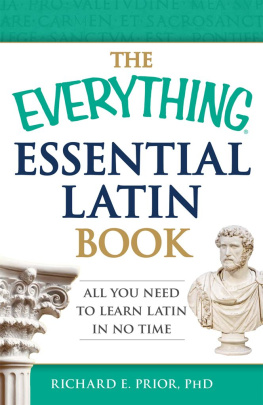
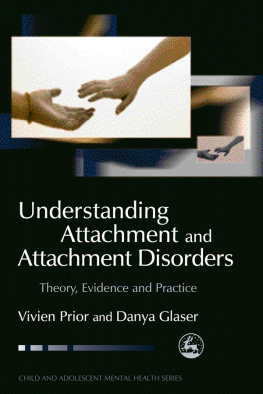


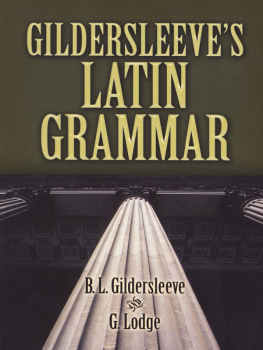
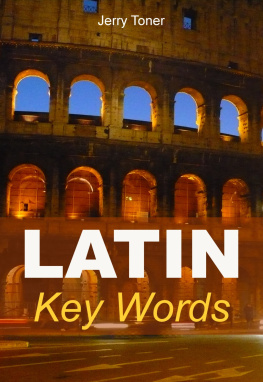
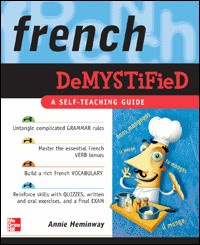
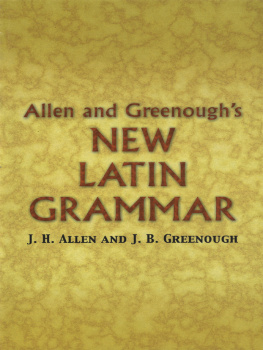
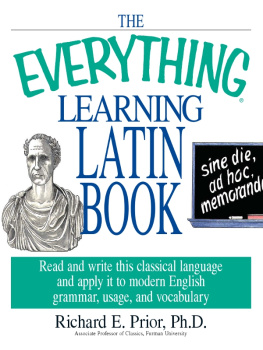
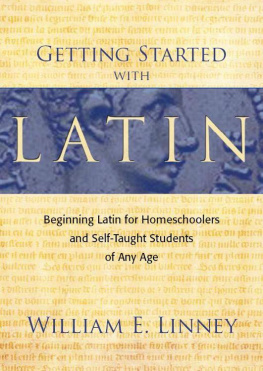

 Copyright 2008 by McGraw-Hill Education, Inc. All rights reserved. Except as permitted under the United States Copyright Act of 1976, no part of this publication may be reproduced or distributed in any form or by any means, or stored in a database or retrieval system, without the prior written permission of the publisher. ISBN: 978-0-07-176228-1
Copyright 2008 by McGraw-Hill Education, Inc. All rights reserved. Except as permitted under the United States Copyright Act of 1976, no part of this publication may be reproduced or distributed in any form or by any means, or stored in a database or retrieval system, without the prior written permission of the publisher. ISBN: 978-0-07-176228-1
 l
l citer et tibi!I hope that things are going as well/happily/luckily for you as they have been going for me!
citer et tibi!I hope that things are going as well/happily/luckily for you as they have been going for me!